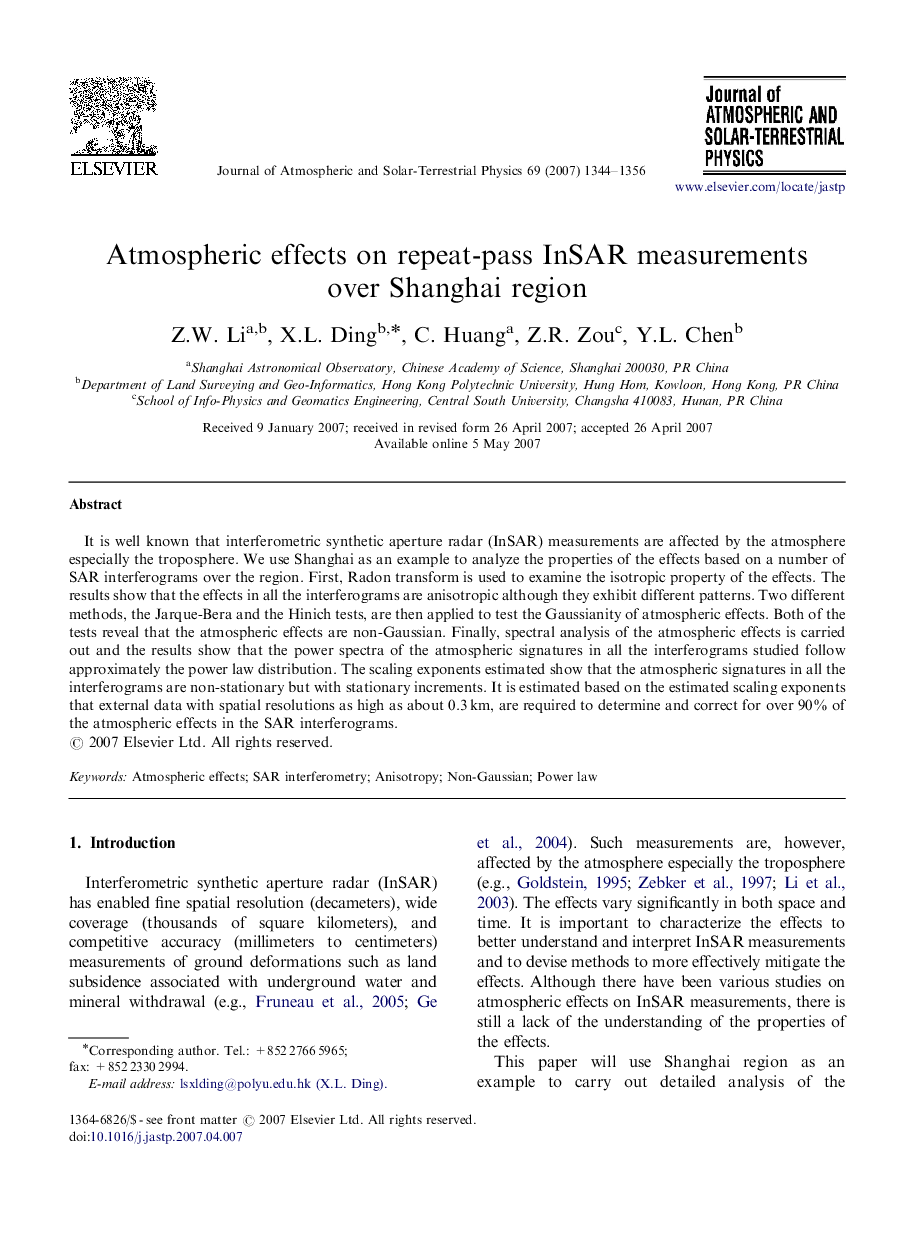| Article ID | Journal | Published Year | Pages | File Type |
|---|---|---|---|---|
| 1778055 | Journal of Atmospheric and Solar-Terrestrial Physics | 2007 | 13 Pages |
It is well known that interferometric synthetic aperture radar (InSAR) measurements are affected by the atmosphere especially the troposphere. We use Shanghai as an example to analyze the properties of the effects based on a number of SAR interferograms over the region. First, Radon transform is used to examine the isotropic property of the effects. The results show that the effects in all the interferograms are anisotropic although they exhibit different patterns. Two different methods, the Jarque-Bera and the Hinich tests, are then applied to test the Gaussianity of atmospheric effects. Both of the tests reveal that the atmospheric effects are non-Gaussian. Finally, spectral analysis of the atmospheric effects is carried out and the results show that the power spectra of the atmospheric signatures in all the interferograms studied follow approximately the power law distribution. The scaling exponents estimated show that the atmospheric signatures in all the interferograms are non-stationary but with stationary increments. It is estimated based on the estimated scaling exponents that external data with spatial resolutions as high as about 0.3 km, are required to determine and correct for over 90% of the atmospheric effects in the SAR interferograms.
